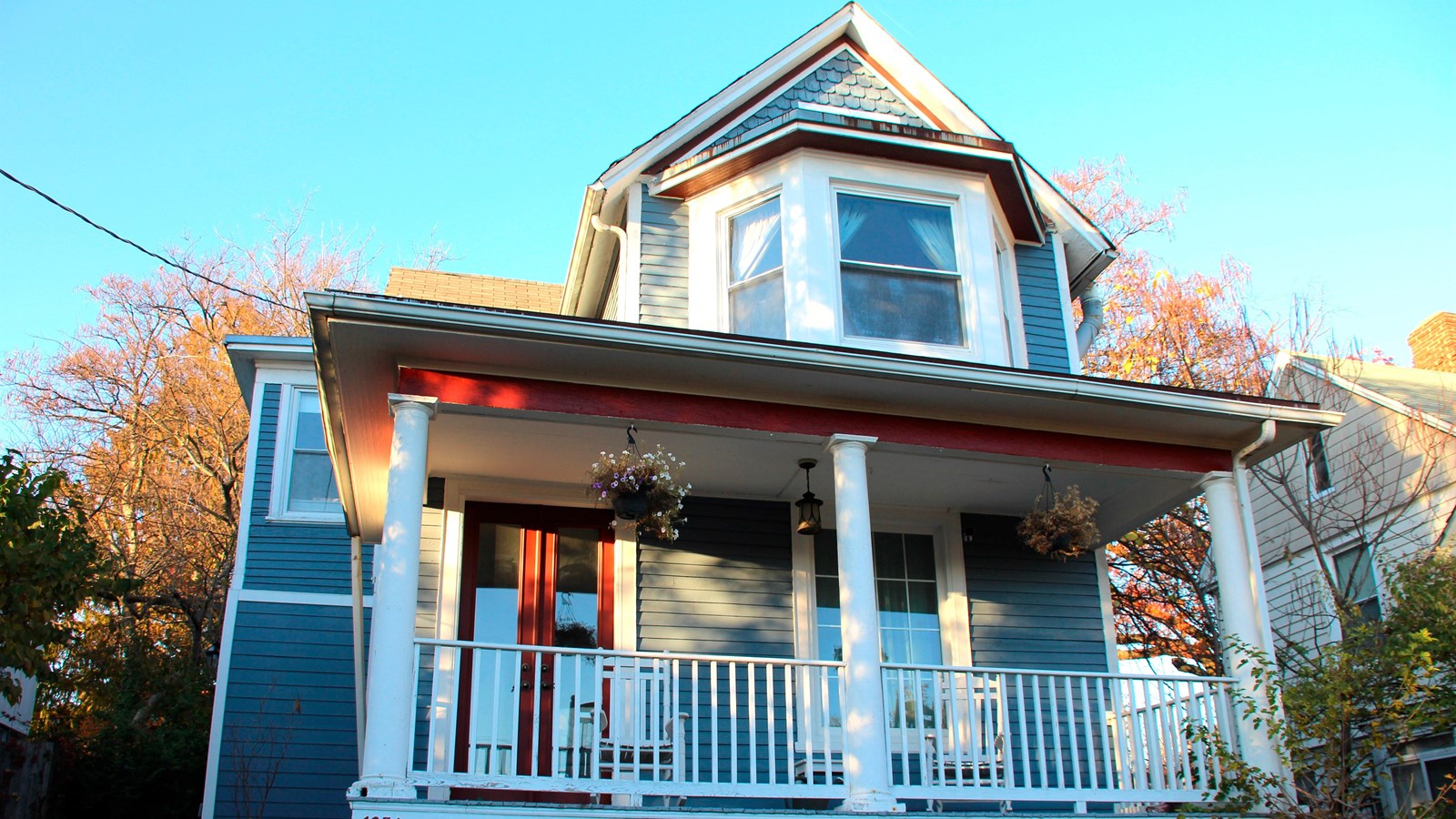Last updated: February 20, 2025
Place
Slowe-Burrill House

NPS/Kathryn Smith
The Slowe-Burrill House was once home to the most famous lesbian couple in Washington D.C., Lucy Diggs Slowe and Mary Burrill. They lived here from 1922 until Slowe's death in 1937. Slowe and Burrill were prominent activists, artists and educators, but neither publicly claimed their relationship. Despite this, to their community Slowe and Burrill were known as romantic partners. Unlike the other monuments to Slowe and Burrill, their home, centers their queerness alongside their professional achievements.
Slowe and Burrill were trailblazers in Washington’s Black community during the early 20th century. They navigated the intersecting oppressions of race and sex, achieving groundbreaking successes. Slowe, for instance, became the first woman to win the American Tennis Association Women’s Singles Championship and co-founded of Alpha Kappa Alpha, the nation’s first Black sorority. In 1922, she became Howard University’s first Dean of Women, playing a pivotal role in the modernization of Historically Black Colleges and Universities (HBCUs). Burrill, a high school teacher and playwright associated with the Harlem Renaissance, contributed to the cultural and intellectual advancements of the New Negro Movement. Burrill and Slowe’s accomplishment are both exceptional and part of a larger movement of women in the United States claiming independent personal and professional lives.
A key part of this independence was housing. Slowe and Burrill lived together during a period of time when female partnerships--two or more women living together -- was considered socially acceptable as a way to gain finacial indpednece. Using the guise of these "Boston Marriages," Slowe and Burrill succesfully hid their relationship to the public. To their Black Queer friends and community, however, they were known as partners. Their relationship is notable not only for its longevity but also for being one of the few documented cases of romantic partnerships between Black women during this time.
The house is unique among monuments to Slowe and Burrill because it centers their queerness alongside their professional achievements. It offers a place to reflect on their extraordinary lives and the untold stories of many other Black queer individuals who shaped the nation’s history.
Reflection Question
What place from your life would you like to save to tell the future about your life? Find a picture of this place and add it to your album.
Designation
On December 13, 2024, the Secretary of the Interior designated the Slowe-Burrill House in Washington, DC a National Historic Landmark. View the National Historic Landmark nomination for the Slowe-Burrill House.
National Historic Landmarks (NHLs) are historic places that possess exceptional value in commemorating or illustrating the history of the United States. The National Park Service’s National Historic Landmarks Program oversees the designation of such sites. There are just over 2,500 National Historic Landmarks. All NHLs are also listed in the National Register of Historic Places.
Reflection Question:
What place from your life would you like to save to tell the future about your life?
